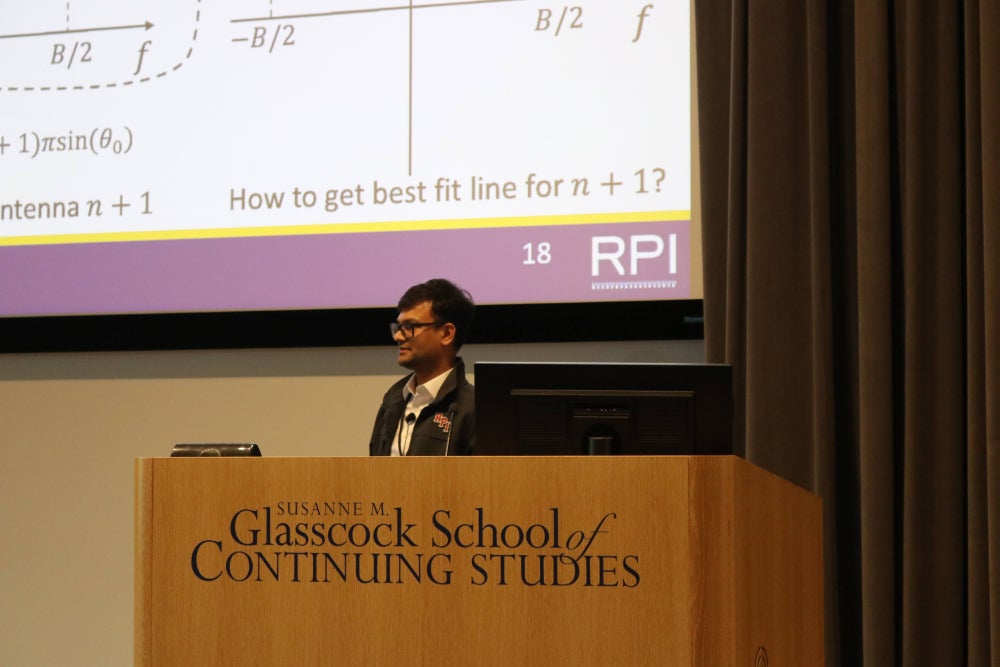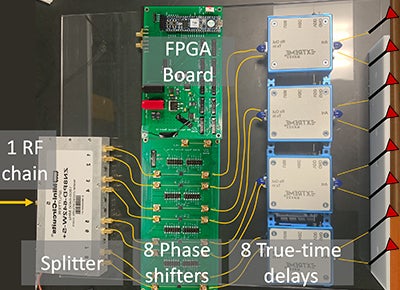
ECSE Assistant Professor Dr. Ish Jain presented a breakthrough approach that could define how future 6G networks deliver faster, more reliable, and more scalable connectivity. The new technology, called FlexLink, introduces a fundamentally new way to structure wireless communication by splitting a signal into separate components so that critical information can be prioritized. This allows next-generation networks to handle vastly more devices while maintaining high speed and reliability.
“With FlexLink, we can support nearly ten times more devices on the same bandwidth while keeping latency extremely low,” said Dr. Ish Jain, who directs RPI’s Wireless AI and Systems (WAYS) Lab. “This is a major step toward making large-scale, real-time connectivity feasible for robotics, autonomous systems, and immersive applications.”
Reimagining Wireless Beams
FlexLink addresses a long-standing bottleneck in wireless systems where “control” signals — the messages that manage beam direction, bandwidth, and user scheduling — get mixed with large data packets. In today’s networks, this bundling causes control messages to queue behind bulky traffic, slowing down link setup and handovers.
Instead of relying on a single beam to carry everything, FlexLink decouples control and data in hardware. Using a specialized delay-phased array, the system sends multiple strong beams at once — one dedicated to control, others for data — across the same wideband channel. This results in nearly double the spectral efficiency compared to conventional designs.
“By physically separating control and data beams, we eliminate the traffic jam that limits responsiveness in 5G and 6G,” explained Jain. “The result is a wireless link that behaves more like a multi-lane highway — fast, reliable, and scalable.”
From Lab Prototype to Next-Gen Standards
The concept was co-developed with collaborators Professor Dinesh Bharadia and Rohith Reddy Vennam at the University of California San Diego (UC San Diego), where Jain completed his Ph.D. The team presented the research, “FlexLink: Decoupling Control and Data Beams for Next-Generation Wideband Networks,” at the ACM MobiHoc 2025 symposium in Houston. The paper can be accessed online at https://dl.acm.org/doi/pdf/10.1145/3704413.3764470.
The study demonstrated not just theoretical insights, but a working eight-antenna prototype, validating that the approach can be realized with practical hardware.

A prototype demonstrates the team’s approach with an eight-antenna delay phased array.
“FlexLink is grounded in a simple, elegant mathematical framework that works across multiple architectures,” Jain noted. “Our goal is for this concept to help shape the emerging 6G standards, and several industry partners have already shown interest.”
Advancing Wireless Systems Research at RPI
At Rensselaer, Jain continues to advance this research through the WAYS Lab, which focuses on intelligent, programmable wireless systems for communication, sensing, and security. His group integrates AI-driven wireless control, open RAN testbeds, and hardware-software co-design to create new paradigms for ultra-reliable, low-latency networking. The profile can be accessed here https://faculty.rpi.edu/ish-jain
“RPI is uniquely positioned to drive these innovations,” said Jain. “We have the interdisciplinary strength to turn fundamental research into real-world, scalable systems that define the next era of connectivity.”
The project received support from the U.S. National Science Foundation (awards #2211805 and #2232481).
Images courtesy of Ish Kumar Jain, Rohith Reddy Vennam, and Dinesh Bharadia
The story also appeared at https://today.ucsd.edu/story/team-debuts-new-approach-to-6g-wireless

